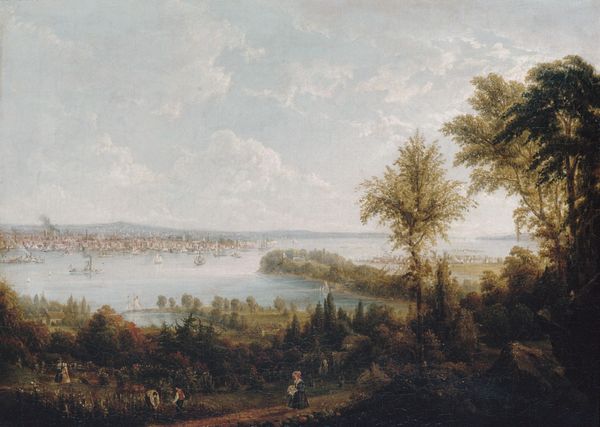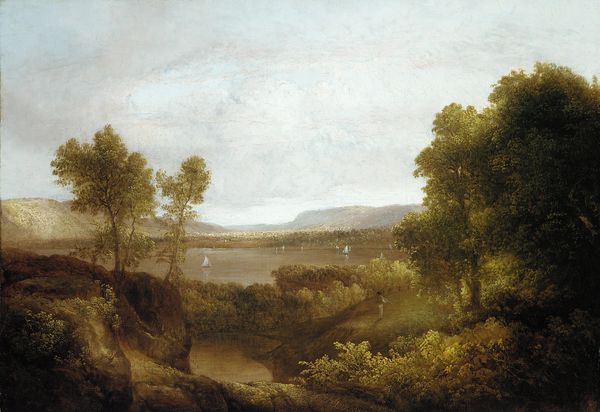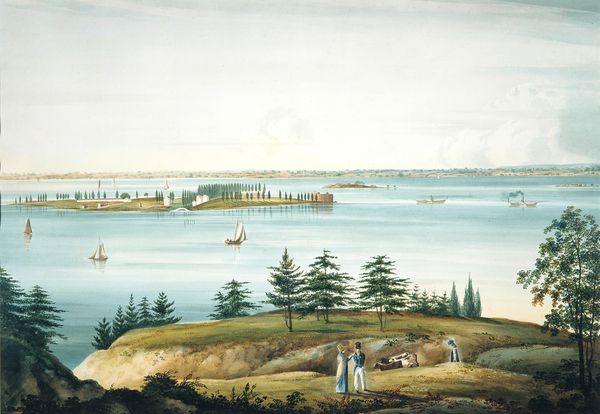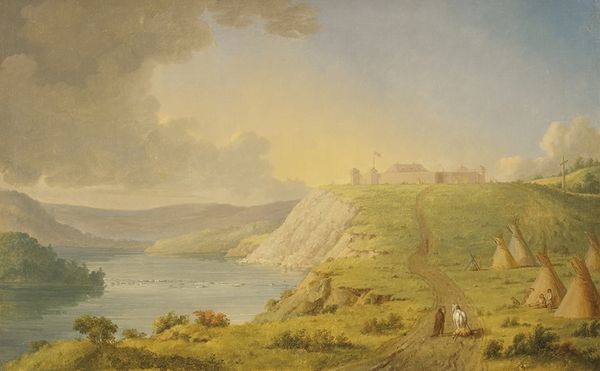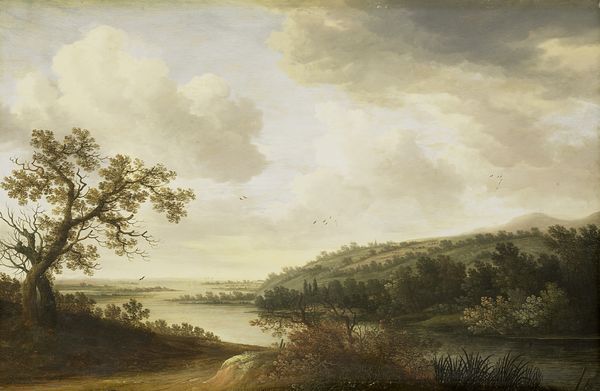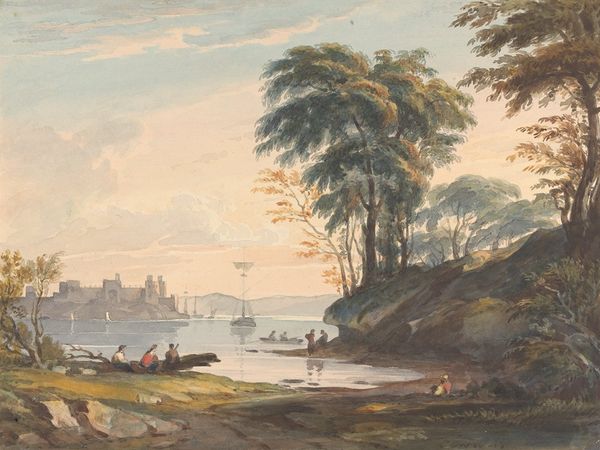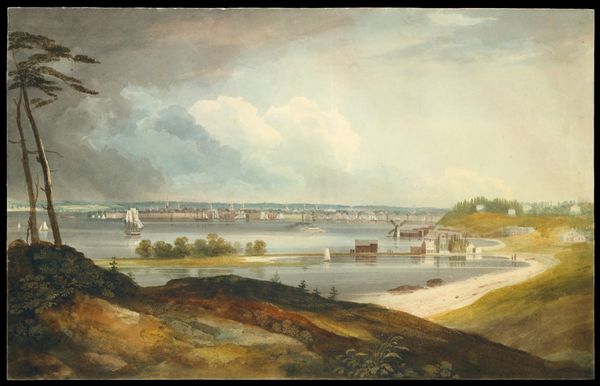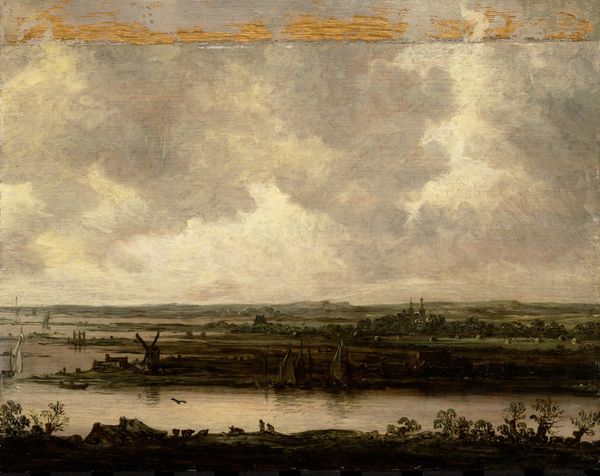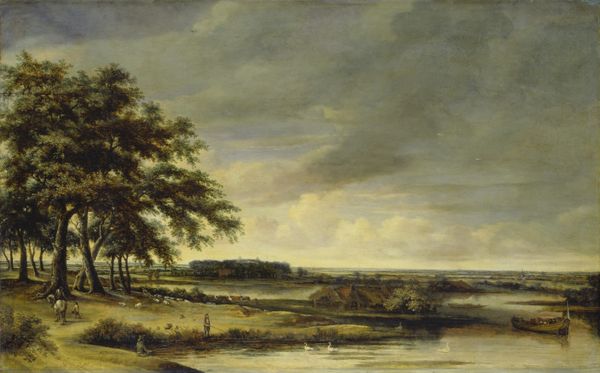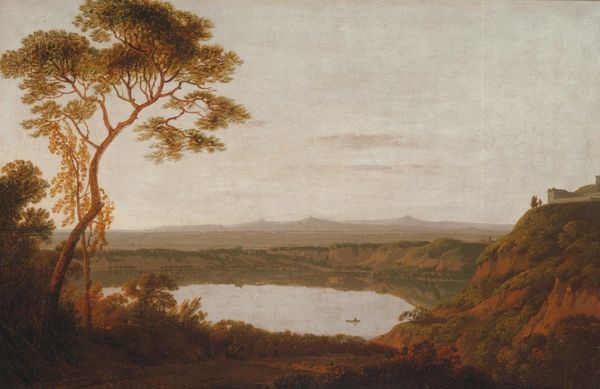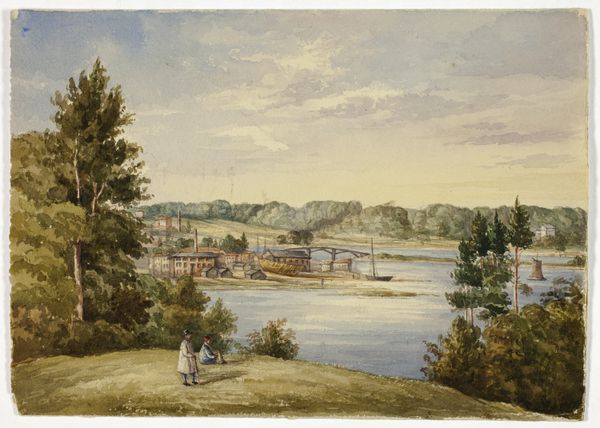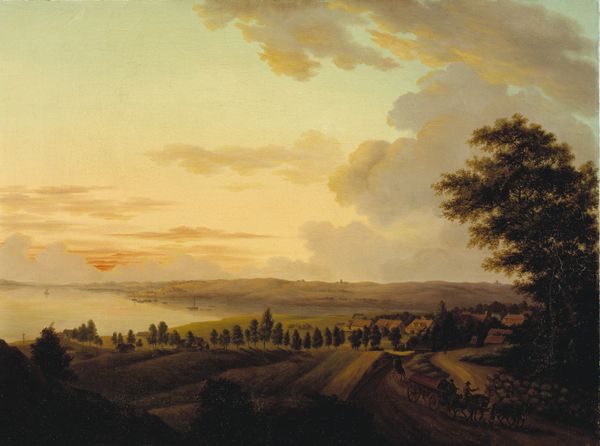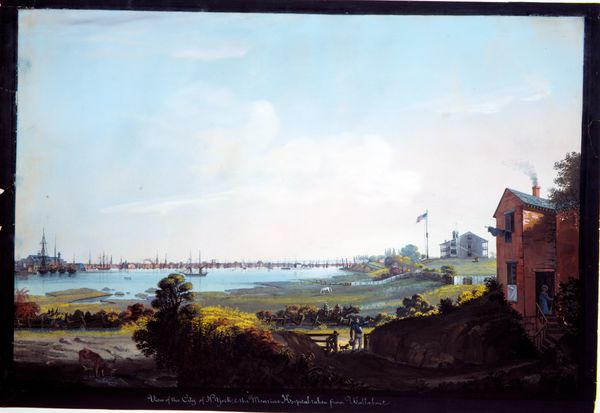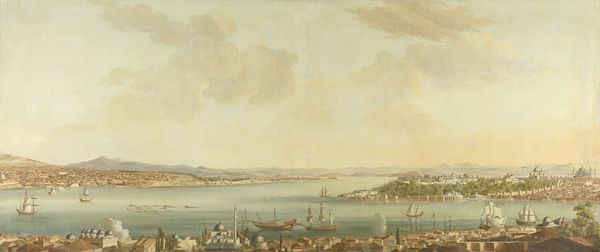
Dimensions: 16 1/16 x 24 1/8 in. (40.8 x 61.3 cm)
Copyright: Public Domain
Curator: Before us is William Guy Wall’s “New York from Weehawk,” a watercolor and graphite work likely completed between 1817 and 1823. Editor: It strikes me immediately with its melancholic stillness, almost like a memory fading at the edges. The vast expanse of water dominates the view, yet the distant city feels so fragile, almost ethereal. Curator: Indeed. The composition is remarkable in its structuring of space. The eye is led from the foreground’s earthy tones and detailed brushwork, across the serene water, to the faintest articulation of the burgeoning cityscape. The repoussoir effect, using the dark landmass on the right, really pushes the city into the distance. Editor: And what does it tell us, this positioning? Wall is making choices. He emphasizes Weehawk as a viewing point. I'm immediately thinking of questions around landscape painting, settler colonialism, and dispossession. The artist shows us what "progress" looks like, perhaps at a steep cost. Who is afforded this view? Curator: The hazy atmospheric perspective certainly invites a level of visual engagement beyond mere representation. Look at the delicate rendering of the trees; observe how the sunlight diffuses across the water. It evokes a profound sense of tranquility and contemplation through careful arrangement. Editor: That "tranquility," though… isn’t that always suspect? What about the narratives silenced to uphold it? This so-called picturesque view depends on erased histories and uneven power dynamics. We must remember that such images helped construct and maintain an American identity rooted in expansion. Curator: While the historical context informs our understanding, we can also appreciate Wall’s handling of color and light as purely aesthetic achievements, focusing on how each element contributes to a cohesive visual experience, inviting a moment of detached aesthetic pleasure. Editor: But can we, in good faith, divorce the aesthetic from its entanglements with historical power structures? Art demands a responsible understanding, urging us to ask ourselves what ideologies this visual framing serves. Curator: I believe Wall invites this consideration through a composition offering not only visual appeal but also a complex contemplation of landscape. Editor: Exactly; landscape and nation-building, inherently. The seeds of urban development have material costs that still echo loudly today. I leave wondering what stewardship of that distant city really means.
Comments
No comments
Be the first to comment and join the conversation on the ultimate creative platform.
